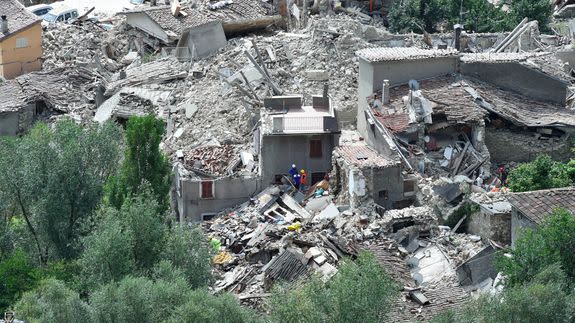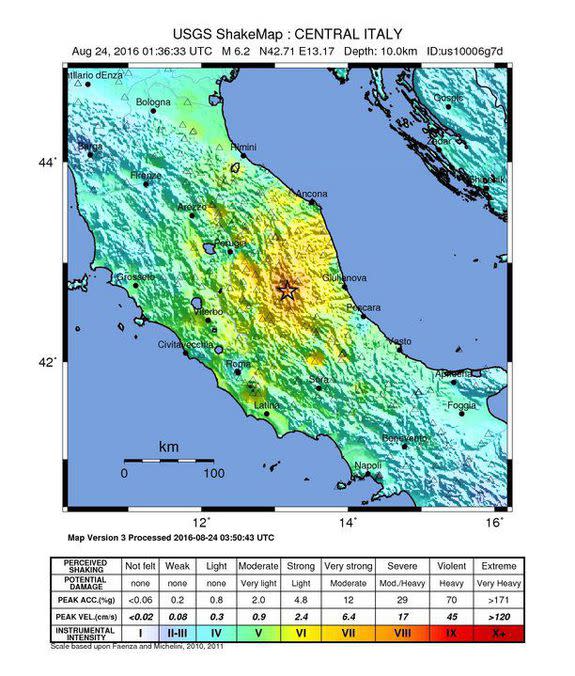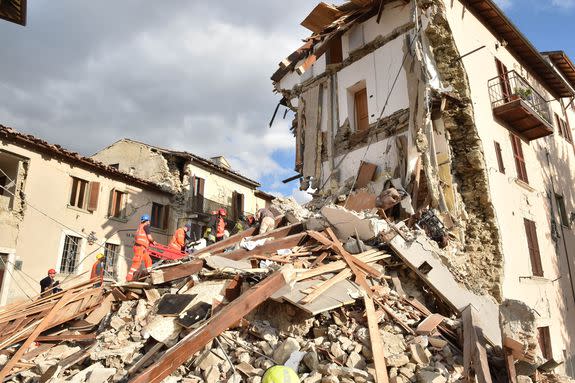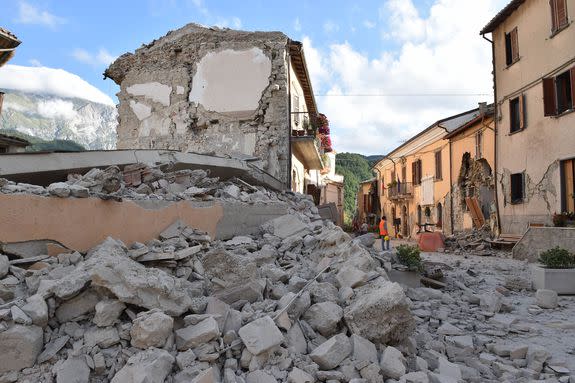Here's why Italy is prone to devastating earthquakes

UPDATE: Aug. 25, 2016, 8:19 a.m. BST Death toll is at least 247 dead: 190 in Rieti province and 57 in Ascoli Piceno province, according to Italy Civil Protection.
Dozens of people were killed in central Italy after a 6.2-magnitude earthquake nearly leveled hilltop towns and trapped residents under piles of rubble.
The Wednesday morning earthquake is the latest in a string of deadly seismic events to strike Italy in the past four decades.
The Mediterranean nation is particularly prone to earthquakes for a mix of geographical reasons, Jennifer Weston, a seismologist with the International Seismological Center in England, told Mashable.
SEE ALSO: This photo shows the level of destruction of Italy earthquake
Italy and its neighboring countries sit at the spot where the Eurasia and Africa (or Nubia) tectonic plates collide.
"They're just pushing up against each other all the time," Weston said in a phone interview.

Image: U.S. geological center
The boot-shaped nation also sits west of the Tyrrhenian basin, a sedimentary basin in the Mediterranean Sea that is opening. To Italy's east, the Adria microplate is slipping beneath Eurasia and the Apennines Mountains, a process known as subduction.
"All this movement leads to energy being stored up in the crust, and eventually that's going to be released," Weston said. "Earthquakes are just this releasing of energy that's been built up."
Italy's earthquakes are particularly devastating for another reason: topography.
In mountainous areas like Norcia — the epicenter of Wednesday's earthquake — communities are built along steep slopes. Shaking from earthquakes can cause landslides, sending homes and construction tumbling into valleys, resulting in higher damages and death tolls compared with flatter parts of the world, Weston said.

Image: Giuseppe Bellini/Getty Images
At least 73 people have died so far in Wednesday's earthquake, which affected a cluster of small communities about 85 miles east of Rome, Italy's civil protection department told reporters around 10 a.m. EDT.
The U.S. Geological Survey (USGS) placed Norcia on "red alert" for potential economic losses. "Extensive damage is probable, and the disaster is likely widespread," according to the agency, which placed estimated economic losses at less than 1 percent of Italy's gross domestic product.
"Past events with this alert level have required a national or international level response," USGS said on its website.
Norcia, a town of about 5,000 people in Perugia province, lies in the central part of the Apennines, which run from the Gulf of Taranto in the south to the southern edge of the Po basin in Italy's north.

Image: Giuseppe Bellini/Getty Images
The Central Apennines have experienced several significant earthquakes in recorded history, according to USGS.
In April 2009, a 6.3-magnitude earthquake near the town of L'Aquila, about 30 miles south of Wednesday's event, killed nearly 300 people, injured more than 1,000 others and left at least 55,000 people homeless.
A 6.0-magnitude earthquake in September 1997 killed 11 people, injured more than 100 others and destroyed roughly 80,000 homes in the Marche and Umbria regions. That quake was part of a "seismic sequence" that included eight events of magnitudes greater than 5.0 over a two-month period.
The region's largest earthquake recorded by scientific instruments — and its deadliest — was a 6.7-magnitude earthquake in 1915. The event killed around 32,000 people in and around the city of Avezzano.
